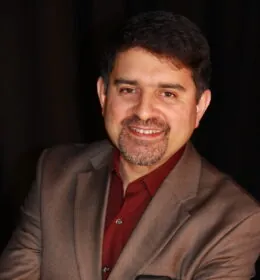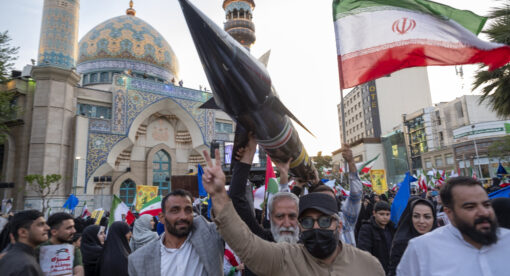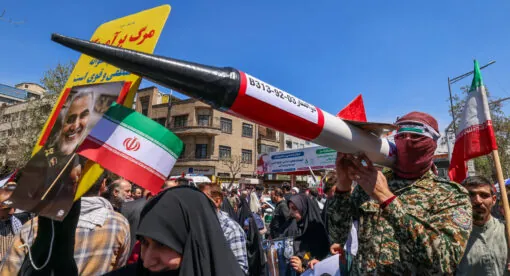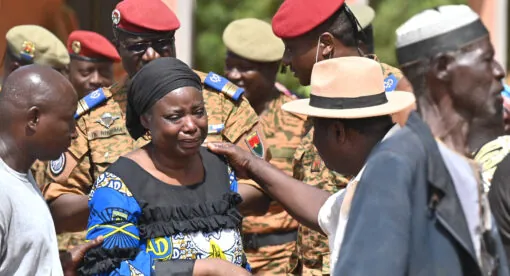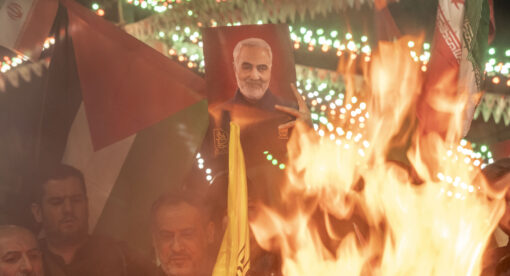The Nov. 29 London Bridge attack by an Islamist assailant has once again intensified the debate over radicalization and deradicalization. Having done my doctorate on the process by which Salafists and jihadists could undergo ideological and behavioral transformation, I remain deeply interested in the mechanics of how young Muslims who have been lured to the scourge of extremism and terrorism can potentially be mainstreamed. After many years of study, though, I have come to realize that ideological perversion of religion represents only half of the problem.
Terrorist tradecraft is the crucial other half, which unfortunately does not get as much attention as it should. The skills required to produce bombs, handle weapons, plan and execute attacks – all the while remaining undetected – are the critical components without which the phenomenon of terrorism would not be the kind of threat it is today.
One of the immediate benefits of degrading ISIS as an institution is the weakening of its war-making capabilities. The jihadist entity’s capacity to train operatives in the of use guns and the manufacture of improvised explosive devices decreases. As a result, we see more and more crude attacks such as the use of vehicles to ram into pedestrians or stabbing incidents. If 28-year old Usman Khan, who a few days back took the lives of two innocent people and maimed several others in the heart of the British capital, had been a well-trained operative with access to resources and organizational infrastructure, the carnage could have been exponentially worse.
Ideology and the Difficulties of Prediction
It is very tough for even the most sophisticated of intelligence services to really know how many others like Khan are out there preparing for the opportunity to kill. Western law enforcement agencies maintain watch lists of radicalized individuals with the potential to become terrorists. However, it is almost impossible to know when an individual who has been exposed to extremist impulses will decide to act upon them. The fact that Khan had been released from prison after serving time on a prior terrorism offense and was wearing an ankle tag speaks volumes of the magnitude of the challenge.
As research continues to show, the process by which individuals are radicalized and their respective journeys toward militancy is a complex one. There is a great deal of discussion of the “root causes” of Islamist terrorism. Among these causes, grievances and alienation from mainstream society are seen as the key factors propelling individuals to engage in acts of violent extremism. That said, we know that the number of individuals with a grievance of one sort or another and who feel alienated from the wider societies in which they live, is far larger than the subset of people who resort to criminal activity.
Experts studying this phenomenon are engaged in mapping out the various pathways that lead a significant number of people upset with their social, political, and economic environment toward violence. But the harsh reality is that it is terribly enigmatic to tell which individuals from within a vast pool of latent extremism have crossed over to the point to where they will engage in terrorist acts. There is no good way to tell when such people will use violence to achieve their ideological aims. Governments do not have the resources to track all those would-be terrorists based on ideological metamorphosis.
There is a reason why the internationally adopted strategy of countering violent extremism (CVE) avoided the far more ambitious goal of combating non-violent forms of extremism. The space of non-violent extremism is extremely expansive and nebulous. Judging by ideas alone, it is difficult to distinguish between an extremist and someone with ultraconservative religious views – let alone to identify someone who is prone to resort to violence. This conundrum has major implications for the struggle against violent and non-violent forms of extremism.
Complicating this situation is the debate among academics, policy analysts, practitioners, and journalists about countering violent extremism (CVE) and preventing violent extremism (PVE). A false binary has been created between CVE and PVE. The former is generally described as the use of hard classic counterterrorism measures, whereas the latter is promoted as a more holistic soft approach that seeks to address the conditions that engender extremism. PVE is more suited to dealing with latent extremism and even then, entrenched geopolitical realities seriously limit the extent to which the drivers enabling extremism can be addressed.
Take, for example, the situation in Iraq and Syria. The underlying conditions in both countries (autocratic meltdown, geosectarianism, growth of ungoverned spaces, lack of viable political economies, interests of regional powers, etc.) are not issues that can be addressed in the short term. These circumstances give ISIS and other Salafist-jihadist forces the space to mount a resurgence even after suffering defeat, as has happened with the demolition of the ISIS caliphate. Put differently, the ideological struggle against Islamist radicalism is a multi-generational one.
The Role of Tradecraft
In the meantime, security forces need to deal with threats in the here and now. That is where the focus needs to be on interdicting tradecraft, which is more manageable than focusing on radicalization. Counterterrorism efforts should also be triaged, with priority given to preventing attacks involving the use of more lethal weapons, which is a function of tradecraft. The same logic of tradecraft that enables terrorists also assists security forces in hunting them down. The flow of guns, ammunition, and precursor materials for constructing bombs can be better tracked.
Likewise, training and preparation for such attacks is also detectable, because these activities involve physical movements as opposed to evolution of thought. As long as U.S. and allied intelligence services expend the bulk of their energies on making sure that terrorist entities are denied the ability to impart tradecraft to their operatives, we will be able to considerably minimize large-scale attacks. That said, it is much harder to stop someone who has decided to mow down or stab people, given the low-tech nature of the tradecraft. But the upside is that the damage from a terrorist with low tradecraft skills can still be contained.
As the latest London Bridge attack demonstrated members of the general public can confront an attacker armed with a knife or a vehicle before the first responders arrive on the scene. Greater public awareness and vigilance will go a long way in limiting the extent of harm that low-tech terrorists are able to do. In the long run, the focus has to be on improving our understanding of radicalization (and more important, deradicalization) processes and how they can be operationalized. Until that happens, tracking tradecraft rather than ideology will help us get ahead of the terrorism curve and better focus on the broader challenge of extremism.
Dr. Kamran Bokhari is Director of Analytical Development at the Newlines Institute. Dr. Bokhari is also a national security and foreign policy specialist at the University of Ottawa’s Professional Development Institute. Bokhari has also served as the Central Asia Studies Course Coordinator at U.S. Department of State’s Foreign Service Institute.
The views expressed in this article are those of the author and not an official policy or position of the Newlines Institute.


